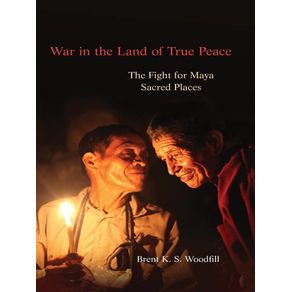For the ancient and modern Maya, the landscape is ruled by powerful entities in the form of geographic features like caves, mountains, springs, and abandoned cities--spirits who must be entreated, through visits and rituals, for permission to plant, harvest, build, or travel their territories. Consequently, such places have served as points of domination and resistance over the millennia--and nowhere is this truer than in Guatemala's Northern Transversal Strip, the subject of Brent K. S. Woodfill's War in the Land of True Peace.
This strategic region with its wealth of resources--fertile soil, petroleum, and the only non-coastal salt in the Maya lowlands--is the site of some of the most sacred Maya places, and thus also the focus of some of the signal struggles for power in Maya history. In War in the Land of True Peace Woodfill delves into archaeology, epigraphy, ethnohistory, and ethnography to write the biographies of several of these places, covering their histories from the rise of the Preclassic Maya through the spread of transnational corporations in our time. Again and again the region, known since Spanish conquest as Vera Paz, or True Peace, has seen incursion by a foreign group--including the great Maya cities of Tikal and Calakmul, the Hapsburg Empire, Guatemalan military dictatorships, and contemporary corporations--seeking to expand its power. Each outsider, intentionally or not, used the Maya need for access to these places to ensure loyalty. And each time, local Maya pushed back to reclaim the sacred places for their own.
From early struggles to remove foreign influence to present-day battles over land tenure and indigenous-run ecotourism parks, this book documents a continuity in Maya culture over several thousand years--and illuminates the world view, with its sense of personhood and religion so different from the West's, that informs this enduring culture.

